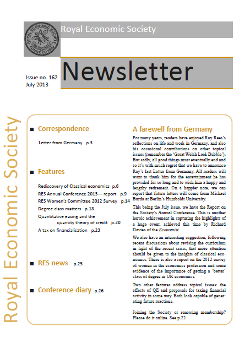Quantitative Easing and the Quantity Theory of Credit
‘Quantitative easing’ (QE), has received much publicity in the past five years. However, its effectiveness remains disputed. Moreover, there are different views about what constitutes QE. It is the purpose of this contribution to review the origins and varying applications of QE, using and thereby explaining the macroeconomic model that gave rise to the concept. Called the ‘Quantity Theory of Credit’, this is arguably the simplest empirically-grounded model that incorporates the key macroeconomic role of the banking sector — a task belatedly recognised as crucial by researchers in the aftermath of the 2008 crisis.

